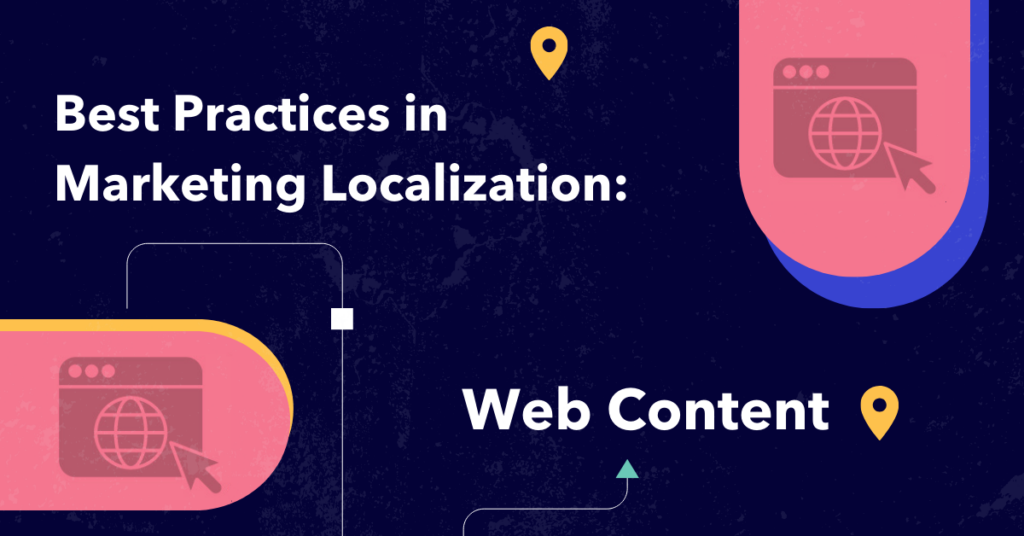Localization is a crucial consideration in any marketing strategy. To explore best practices from video to web content and more, we hosted a three-part webinar series focused on different marketing areas. In part one, we discussed best practices for localization in video including the use of subtitles, voiceover and on-screen test.
In this installment, we will focus on the importance of localizing web content where Gabriele Manasse, Founder of Bablic, will speak with Stevan Relic, Director of Product Management at Unbabel, as they discuss optimizing one of the most powerful tools in marketing – a company’s website.
Creating a Personalized (and Localized) Web Experience
A business’ website is often the first place potential customers will visit when they want to find out more information about what you do and as such, a good first impression is crucial. By not offering a positive experience in the users’ native language, you risk instantly losing them to your competitors who are keen to deliver the most personalized experience possible. So, how can businesses overcome this hurdle?
“It’s important that the website addresses the needs of your audience worldwide and not just your domestic one,” Gabriele shares. “There are countless studies in the market that prove that once you offer content in your audience’s native language, the number of very important metrics improve dramatically. Conversion rate improves, recurring visits improve, and bounce rate decreases. There are studies that say that users are willing to pay a higher price for the same exact good or service just for the privilege of receiving information in their own native language.”
But, with so many regions and languages to address, how does a company begin to decide which languages to localize first?
“Market research is necessary,” shares Stevan. “[What languages you localize for] depends on, what you are portraying on your website, depends on your product and depends on where you want to expand. In addition, time should also be a consideration as some markets are going to be more difficult to localize than others, which means they require more effort.”
Analyzing data is also a key point here Gabriele goes on to share.
“Simply look at your analytics,” Gabriele says. “There’s tons of data around what’s happening on the website. Look up your analytics and see where your traffic comes from. We can see exactly how many users we have from each and every country. And we don’t want to localize for a country that sends us 3% of our traffic. We want to make sure that we cover the countries that send us a significant percent of traffic.”
Prioritizing Web Pages
Once you’ve decided which languages to translate into, your next step is deciding which pages are a priority since in some cases it might not be possible to translate everything at once.
“I think that the first step in any business’ marketing endeavor should be to categorize what are my must haves versus what are my nice to haves,” Gabriele shares.
While priority pages will always include a home page, product pages and more, businesses can’t forget the must-have pages including legal pages such as terms & conditions, privacy, as well as cookie policies.
Optimizing SEO & Localization
SEO is critical when it comes to your customers being able to find your site. Businesses always want to ensure that they rank highest but are also providing users with the most relevant information based on their search term. But if companies fail to adjust SEO for multilingual purposes, these benefits can get lost.
“We want to translate our site so that not only we convert our traffic better, but we also get more traffic organically,” says Gabriele. “All search engines make every possible effort to provide relevant content as a response to search queries and that means content that is in your language and is accessible. So translation, unsurprisingly, will give a huge boost to your site.”
That said, there are many technical aspects that must also be considered according to Stevan.
“Whatever you’re doing in SEO now needs to be restructured for other regions,” Stevan shares. “For example, if you’re looking at the technical bits you need to be able to index the whole content of the site. That is also true when you do SEO in your prime language site.”
Additional considerations to take include making sure the URL structure is clear, properly translating meta content and translating the site map.
Creating a Visual Appeal with Localization
While SEO can help attract visitors to your site, keeping them there is where visuals come in. Websites are designed to look appealing to visitors but what businesses often don’t consider is that a seemingly simple change in language might mean you’ll need to rethink your design to some degree.
“One key aspect is to pay attention to your layout,” Gabriele shares. “Not all languages are created equal. The same sentence in English may take a certain amount of space on your screen. The same exact sentence in German might take twice as much. So pay attention to the fact that your layout doesn’t break.”
“In many languages, words get written from left to right, but a lot of languages are also written from right to left,” Gabriele continues. “It’s not just about changing the text, but when you adapt the entire layout of the website including the direction of the language, that’s when you basically recreate the same experience that was designed in the original language.”
Interested in learning more about best practices in marketing localization for web content? Watch the entire webinar here and stay tuned for part three of our webinar series recaps.












